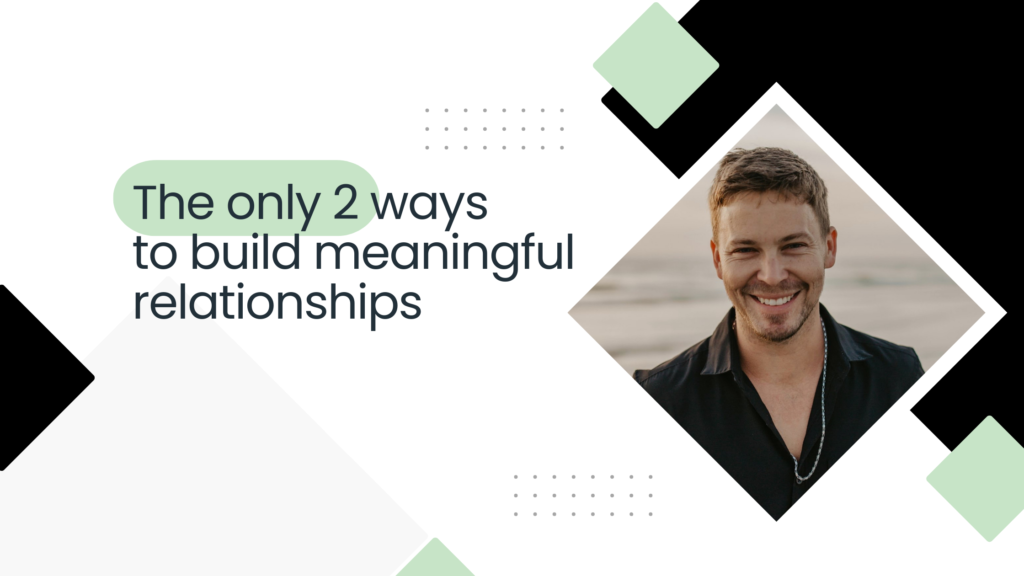This week’s letter is late because I spent a long weekend out of town at a triathlon that my best friends and I do together every year.
I’m incredibly grateful for my circle of friends and consider myself fortunate to have them, but over the years, the race weekend has changed a lot. Twelve years ago, it was two single, recent college grads and one newly married guy. Now, we’re all married, one has three kids, the other has one, and both have another on the way.
The years of beer miles and margarita coolers by the pool have been replaced with non-alcoholic drinks and adult/kid games of croquet.
This year, I noticed something interesting: how differently our wives and we spent our time.
The guys spent the weekend playing games and competing—not just the triathlon itself, but also croquet, battle putt (a mix of beer pong and putting), and bocce ball. The girls, on the other hand, mostly sat in the living room talking. We spent the weekend side-by-side, while the girls spent it face-to-face.
The two ways to build friendships.
There are two ways to build relationships: face-to-face and side-by-side.
Both are necessary for a friendship to flourish, but we tend to favor one form. Generally speaking, men gravitate toward side-by-side activities like running, watching a game, playing sports, or working, while women tend to lean toward face-to-face activities like having coffee, dinner, or just sitting and talking.
However, both approaches are essential for a healthy, growing relationship.
We can’t simply approach relationships one-dimensionally, especially with someone whose preferred method of relationship-building is the opposite of ours. Doing so can lead to stagnant, flat, or unfulfilling relationships.
Relationship Patterns & Recommended Actions
To make this letter actionable, I want to quickly review three types of relationships:
1. Male-Male Relationships
Guys tend to gravitate toward side-by-side activities.
We love to do things together—watch games, play sports, work out, fish—but often, these activities don’t create opportunities for depth or meaning to build in a relationship. It’s something I’ve had to work on a lot over the past few years and continue to work on.
I realized this when I’d get home from a night with friends, and my wife would ask me questions about their lives and wives, and I wouldn’t have any answers. I’d spend hours with them and never ask any questions!
Action Step:
If you’re like me and tend to gravitate toward side-by-side activities, try to make time for some face-to-face ones to build closeness and depth in your relationships. An easy way to do this is to combine side-by-side activities with face-to-face ones.
2. Female-Female relationships
In my perception, like our wives at the race, women tend to gravitate toward face-to-face activities that involve emotional connection and talking.
As a result, women often have deep, meaningful relationships with their friends and provide great support and encouragement to one another. However, only approaching relationships face-to-face can sometimes feel heavy or limit the total number of friends you have.
Ever notice how guys often have 10 “good friends,” while women typically only have a few? Deep relationships require a solid foundation.
Action Step:
Going deep is great, but it’s hard to do without shared life experiences. Try to find activities with your girlfriends that allow you to build history and time together without requiring constant conversation.
3. Male-Female Relationships
These relationships are often our best and deepest. As much as I love my guy friends, I love my wife more and have a deeper, stronger relationship with her than with anyone else. The reason for this is that male-female relationships tend to be built with both side-by-side activities and face-to-face interactions.
The problem many couples face is when one type of activity dominates their interactions. This imbalance can lead to hurt feelings, arguments, and even serious conflicts.
Action Step:
Make sure to balance your activities and understand which type your partner or friend values the most. Often, you can resolve issues or kickstart new growth by simply finding ways to connect in a way that makes the other person feel comfortable and appreciated.







